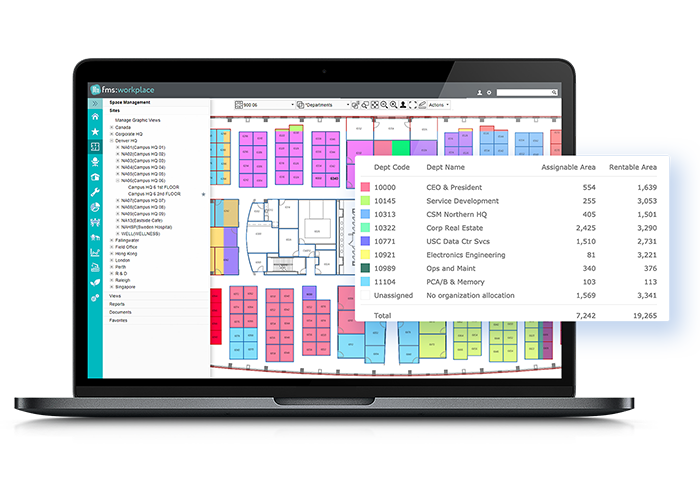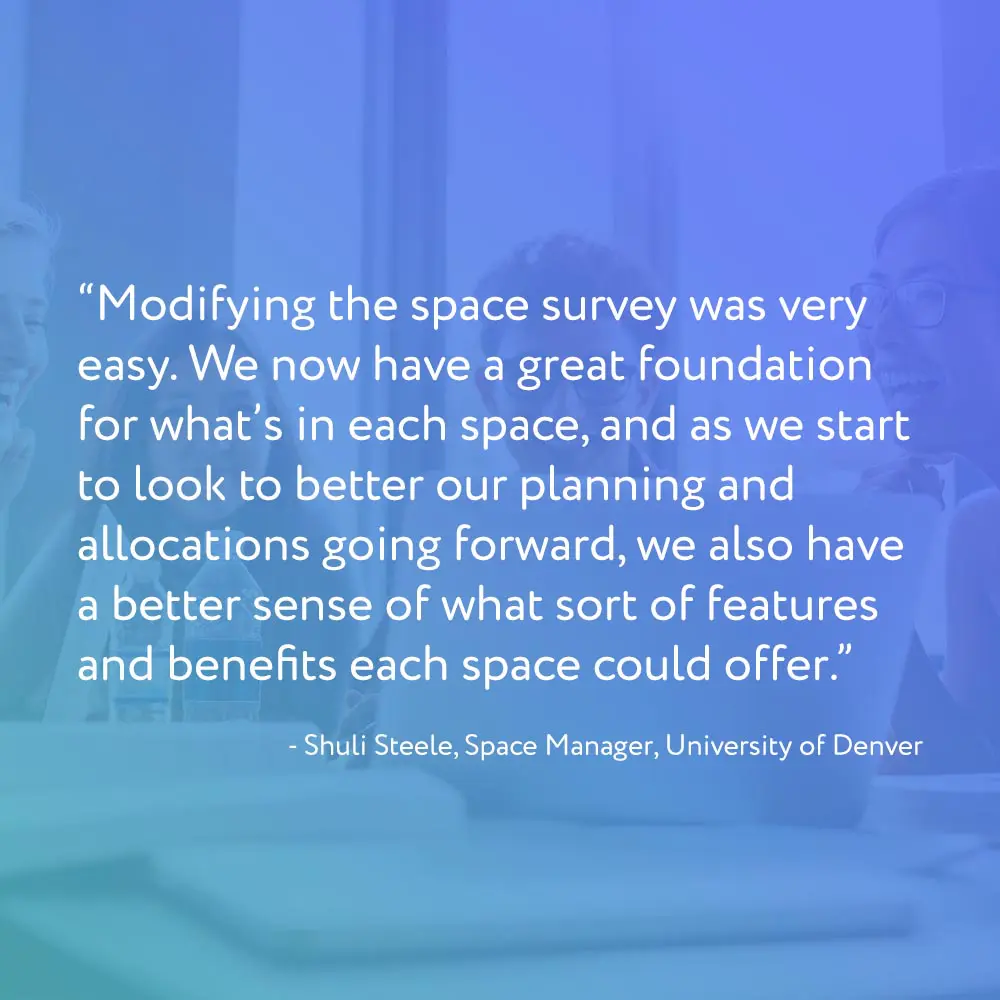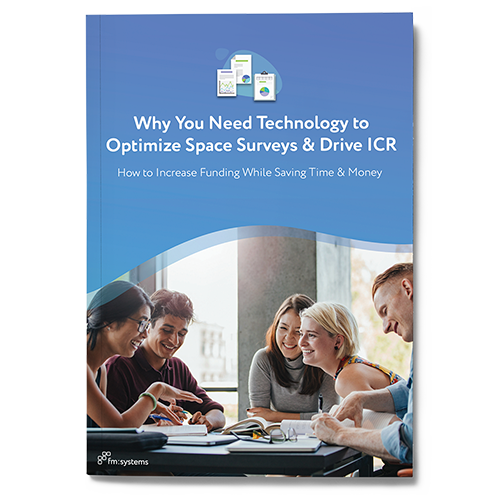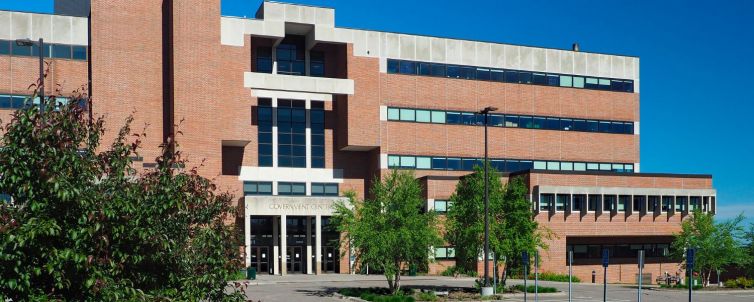University of Denver
How the University of Denver is using FM:Systems to digitize the entire institution’s facilities data to proactively support future space needs, and strategically plan for a safe return to campus during the pandemic.
The Customer
The University of Denver (DU) is a private research university nestled on 125 acres between downtown Denver, Colorado, and the Rocky Mountains. With hundreds of buildings dating back as far as the 1890s, and construction from the 1930s, 1950s, and early 21st century, DU offers a unique but unified campus to its more than 12,000 graduate and undergraduate students.
The Challenge
Each year in April, the University of Denver’s Facilities Management and Planning team is tasked with reporting information related to the campus’ facilities, space usage, and amenities to assess future needs. This typically involved manual entries into a master spreadsheet by business officers who provided data on the spaces under their purview, and Principal Investigators who reported on space, connecting space to grants. This information is part of the University’s federal reporting requirements.
Consolidating all of this data manually, determining if and where there were duplicates and errors, reconciling discrepancies, and then evaluating information for reporting was both time-consuming and difficult. In fact, from start to finish the entire survey process could take up to a painful six or more months.

When globally recognized campus planning expert, Shuli Steele, joined DU as its Space Manager in 2018, she knew building an integrated workplace management solution (IWMS) was a key first step: “Because DU is very thoughtful about collecting information they can actually use, and understand the value of assessing the right information, we prioritized finding a system that could holistically serve the entire institution both now and well into the future,” Steele said.
“Because DU is very thoughtful about collecting information they can actually use, and understand the value of assessing the right information, we prioritized finding a system that could holistically serve the entire institution both now and well into the future,”
-Shuli Steele, Space Manager
The Solution
After issuing a request for proposals from several IWMS providers, Steele said “the committee felt FM:Systems was the best provider for several reasons. From an IT perspective the UX was well-designed and easy to navigate, the pricing structure was reasonable, and it was easy to bring up to speed quickly.” Having worked with other higher education institutions and other IWMS vendors, the committee also felt FMS:Workplace was the right solution because it could scale with the university long-term.
“From the more traditional on-campus laboratories and classrooms to beautiful legacy observatories on top of a mountain to a golf course, DU has a rich, diverse and unique building portfolio. With FMS:Workplace, we knew we could easily add more data points across any of these buildings and campus facilities into the system over time. Choosing a system that would give us room for growth across the entire campus portfolio and in such an easy manner was especially attractive.”

Implementing & Utilizing FMS:Workplace During COVID-19
To improve campus planning and development for the 2020-2021 school year, DU first implemented FM:Systems Higher Education Survey. This was an especially critical school year to have reliable campus-wide data, as DU prepared to return to offering in-person and blended learning. “The timing was perfect. We announced the survey in April 2020 and rolled it out in May 2020. With many people off campus because of the pandemic, we ran the survey through August – a month longer than we typically would if everyone was on campus.”
“DU has a rich, diverse and unique building portfolio. With FMS:Workplace, we knew we could easily add more data points across any of these buildings and campus facilities into the same system over time.”
-Shuli Steele, Space Manager
Results & What’s Next
In just a few short months, the team gained immediate space usage data across over 100 buildings, including proration activity of shared spaces. This meant, if there was a math lab that was also being used as a classroom, or a large meeting space that periodically doubled as teaching space, it was all now being accurately tracked and readily available in one centralized system. Steele said, “this was a key benefit for the system. For the first time, we have reliable and fast access to information about which spaces are being shared, how they’re being shared between departments, and how they are being shared amongst multiple grants.”
Another attractive feature within the FM:Systems solution for Steele was the ability to easily customize the survey questions for facility management needs. In addition to collecting information about what was taking place in each room and department, and how many people were using each space, they were also now able to build and more easily track amenities using the system – something that had not been centrally tracked before at DU.

“Modifying the space survey was very easy. We now have a great foundation for what’s in each space, and as we start to look to better our planning and allocations going forward, we also have a better sense of what sort of features and benefits each space could offer. For example, the math department often needs multiple whiteboards. Now, we can very quickly find what is in a room, and more efficiently schedule available amenities.
From who and how often a space is being scheduled, to what, how and where amenities are being used, to the way spaces are being used across departments and more – this has been a transformative year for DU. The university is also forming a new space management committee that will include key stakeholders to review space requests and offer recommendations as well as suggest metrics that should be tracked. With FMS:Workplace in place, this group can now leverage tremendous detailed space data to identify areas in support of each person’s contribution, better meet the needs of student engagement and learning experiences, accelerate research opportunities, and identify ways to boost community engagement through performing arts and athletics.

Make your annual space survey process faster, easier and more accurate
Download our guide on how your university space team can simplify reporting, improve ICR rates and gain insights for more informed, strategic decision-making.









